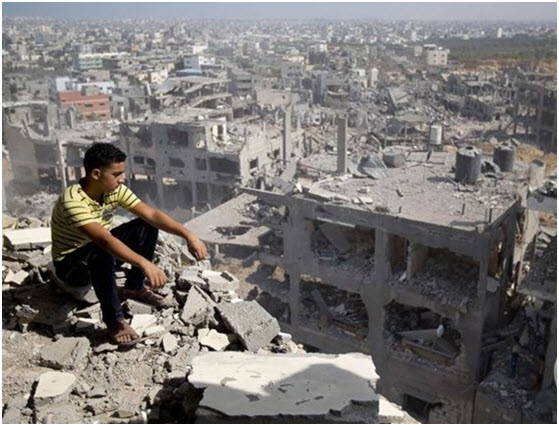Some 50 percent of the buildings that were completely destroyed during Israel’s devastating offensive on the Gaza Strip in 2014 are still awaiting reconstruction, head of the Popular Committee against Siege Jamal al-Khudari said in a statement Saturday, August 14.
According to the Palestinian Ma’an News Agency “the reconstruction process of the small Palestinian territory has been painfully due to the ongoing Israeli siege that imposes severe restrictions on the entry of reconstruction material.” Al-Khudari called upon donating countries to fulfill their pledges in order to end the “disastrous and tragic” situation in the Gaza Strip.
In April, a major survey by the United Nations Office for the Coordination of Humanitarian Affairs (OCHA) found that up to 75,000 Palestinians remained homeless in the blockaded Gaza Strip after the July-August 2014 war. “After hearing from over 16,000 displaced families in the Gaza Strip, it is clear that most continue to live in desperate conditions,” UN Coordinator for Humanitarian Aid Robert Piper said in a statement at the time. “International support to end this situation is urgently needed.”
The survey found that more than 80 percent of the families had borrowed money over the past year to survive, with 85 percent buying food on credit, and as many as 40 percent decreasing their consumption of food. About 63 percent of the displaced Palestinians were renting living space, but nearly 50 percent feared being evicted, OCHA found, adding that the situation for women and girls was of “particular concern.”
The Gaza Strip has seen three wars with Israel since 2008, with Israel’s 2014 offensive destroying 12,600 homes, and leaving another 6,500 severely damaged and 150,000 housing units uninhabitable. The UN warned in September last year that if current trends were to continue unchanged in Gaza, the territory would be uninhabitable by 2020.



